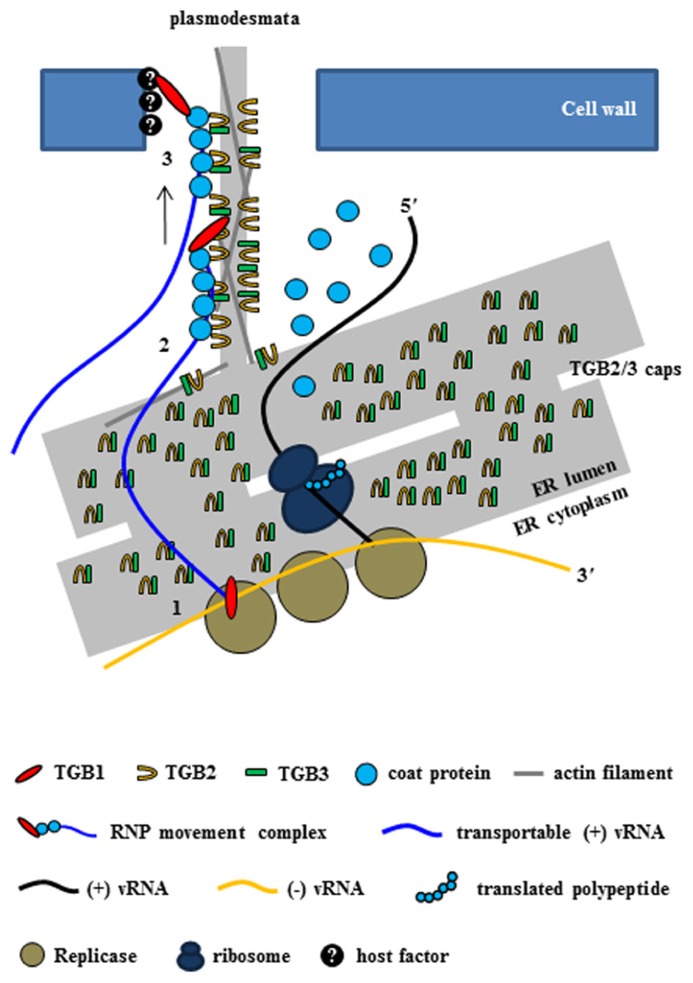FIGURE 3.
Intercellular transport of potexvirus vRNA to PD at the late stage of viral infection. The PD-transportable potexvirus vRNA (blue line) is released from the intermediate double-stranded RNA form by TGB1 protein acting as an RNA helicase (1). The PD-transportable potexvirus vRNA is partially or fully encapsidated by CP subunits, and then TGB1 protein associates with the 5′ end of the partially or fully CP-coated vRNA for the formation of the RNP movement complex at PD “cap” structures that consist of TGB2, TGB3 proteins, and VRC at the ER adjacent to the PD orifice (2). Then, the TGB1-driven RNP movement complex directs the nascent virions into the PD pore (3, Tilsner et al., 2013).

